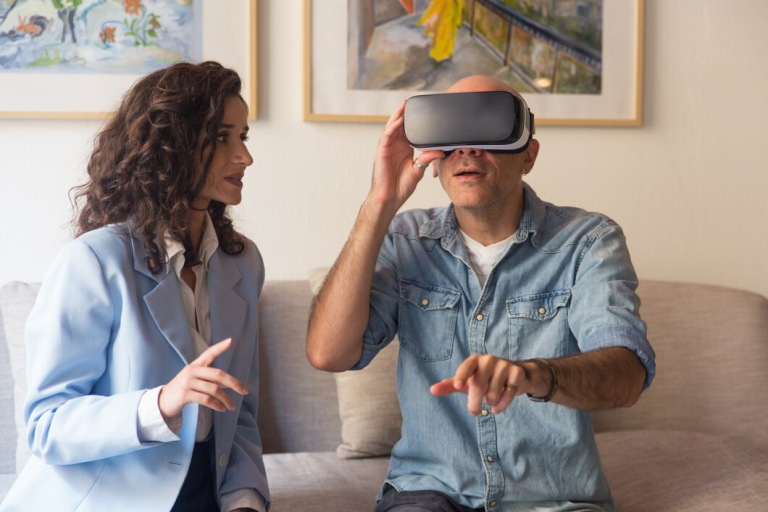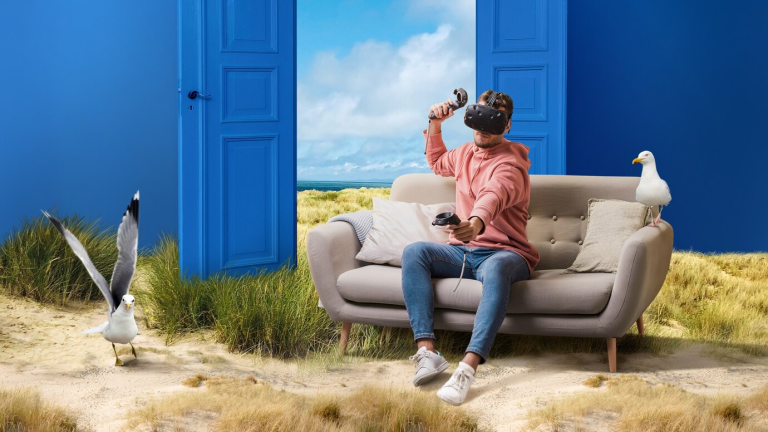When I first delved into the potential of virtual reality (VR) in architecture, I was amazed by its transformative power. At VRchitects, we’ve seen firsthand how VR is revolutionizing architectural design, from enhancing visualization to streamlining the design process. Here’s a deep dive into how VR is changing the game.
Enhanced Visualization and Immersive Experience
One of the most significant impacts of VR in architecture is its ability to provide enhanced visualization. Traditional blueprints and 2D models are now being replaced with immersive 3D environments, allowing clients to experience designs as if they were physically present.
Key Benefits:
- Immersive Walkthroughs: Clients can virtually walk through a space, gaining a better understanding of scale and layout.
- Realistic Environments: VR provides a realistic representation of materials, lighting, and textures, offering a true-to-life experience.
In one of our recent projects, we created a VR model of a residential property. The clients were able to explore every room and make real-time decisions on finishes and furnishings, leading to a more efficient and satisfying design process.
Streamlined Design Process
VR significantly streamlines the architectural design process by enabling quick iterations and modifications. This efficiency reduces both time and costs associated with traditional design revisions.
Efficiency Gains:
- Rapid Prototyping: Easily test and visualize different design concepts.
- Real-Time Feedback: Make changes on the fly based on client feedback during VR sessions.
- Error Reduction: Identify and resolve potential design issues early in the process.
During a commercial office project, we used VR to present multiple layout options. The client could instantly visualize and choose their preferred design, which sped up the decision-making process and minimized costly revisions.
Enhanced Client Collaboration
Client collaboration is crucial in architecture, and VR takes this to the next level. It provides a platform for clients to engage with the design in an interactive and intuitive way.
Collaboration Tools:
- Virtual Meetings: Host virtual meetings where clients can explore the design and provide feedback from anywhere in the world.
- Interactive Elements: Allow clients to interact with different elements of the design, such as moving furniture or changing colors.
- Shared Vision: Ensure that both the architect and the client have a shared understanding of the project goals and vision.
In a recent urban development project, VR enabled stakeholders from different locations to collaboratively review and approve designs. This not only improved communication but also significantly reduced project timelines.
Boosting Marketing and Sales
VR is also a powerful tool for marketing and selling architectural projects. It provides potential buyers with an immersive experience that can significantly influence their purchasing decisions.
Marketing Advantages:
- Virtual Tours: Offer virtual tours of properties, attracting more interest and engagement.
- Pre-Sales: Use VR to sell properties off-plan by providing a realistic preview of the finished project.
- Enhanced Presentations: Create compelling presentations that stand out in competitive markets.
For a high-end condominium project, we created VR tours that potential buyers could experience from our sales office. The immersive experience led to increased interest and early sales commitments, highlighting the effectiveness of VR in marketing.
Educational Applications
Beyond design and marketing, VR is revolutionizing architectural education. It provides students with a hands-on learning experience that traditional methods cannot match.
Educational Benefits:
- Interactive Learning: Students can explore architectural models and environments in an interactive way.
- Practical Training: VR simulations provide practical training opportunities, such as navigating construction sites or testing design concepts.
- Collaborative Projects: Enable collaborative projects where students can work together in a shared virtual space.
We’ve collaborated with several educational institutions to incorporate VR into their architecture programs. This has enriched the learning experience, preparing the next generation of architects for the future of the industry.
Conclusion
Virtual reality is undoubtedly revolutionizing the field of architecture. From enhancing visualization and streamlining the design process to boosting client collaboration and marketing efforts, VR offers countless benefits. At VRchitects, we are committed to leveraging this cutting-edge technology to deliver exceptional results for our clients.
Ready to explore the future of architectural design with virtual reality? Contact VRchitects today to discover how we can transform your projects with VR.
For more insights and updates on VR in architecture, check out our latest blog posts






